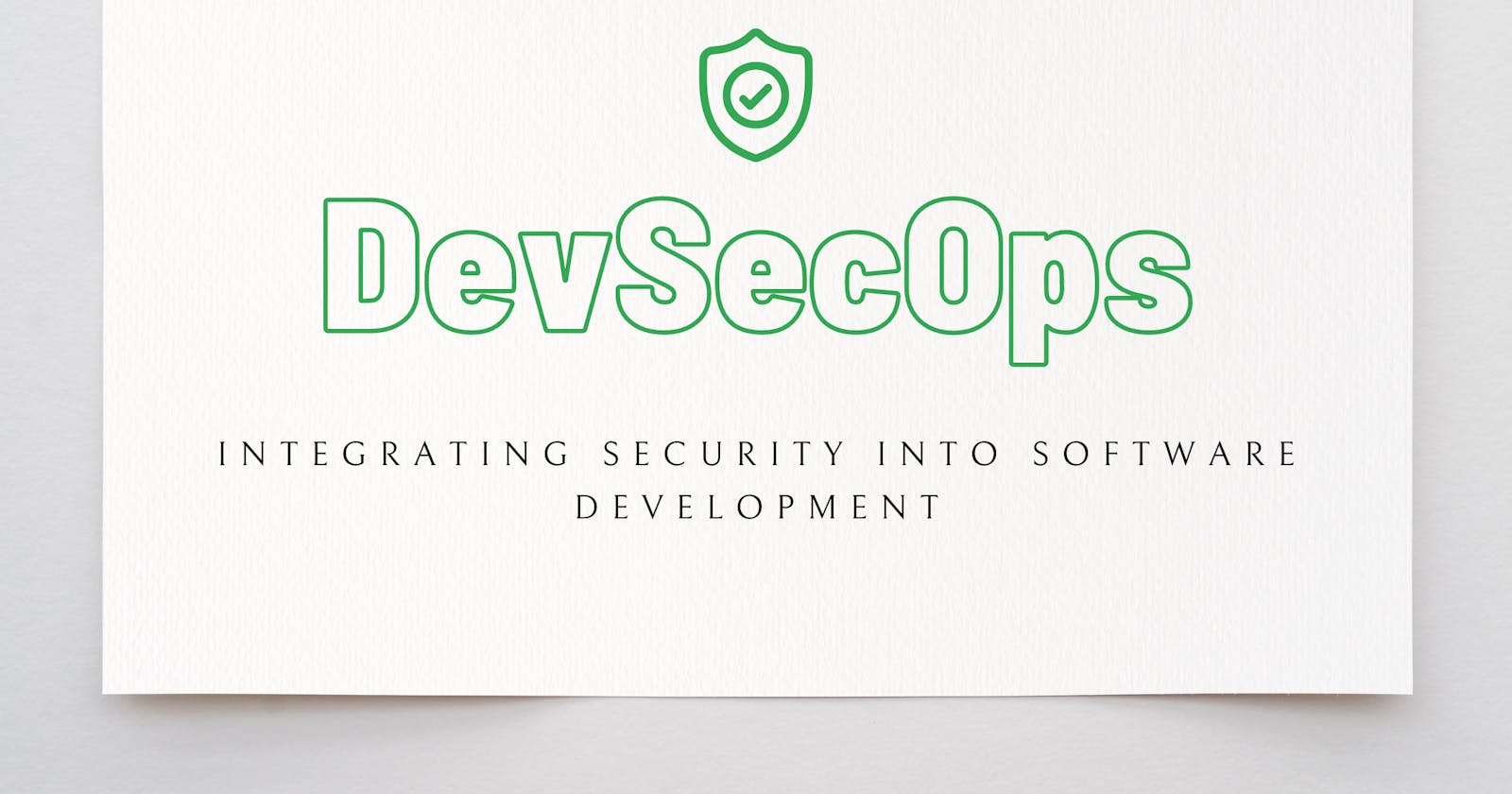DevSecOps: Integrating Security into Software Development
The Importance of Prioritizing Security in the DevOps Process and How to Adopt DevSecOps
In the world of software development, there has been a growing trend towards a more integrated approach that includes security considerations. This approach is known as DevSecOps, and it is becoming increasingly important as more organizations recognize the need to prioritize security in their development processes. In this blog, we will explore what DevSecOps is, why it is important, and how organizations can adopt this approach.
What is DevSecOps?
DevSecOps is a software development methodology that integrates security practices into the DevOps process. DevOps is a software development approach that emphasizes collaboration and communication between developers and operations teams to improve efficiency and speed of delivery. DevSecOps takes this a step further by including security considerations throughout the development process, from design to deployment and beyond.
Why is DevSecOps important?
In today's digital landscape, security threats are becoming more sophisticated and frequent. As a result, security cannot be an afterthought in the development process. By integrating security into the DevOps process, DevSecOps ensures that security is prioritized throughout the development cycle, reducing the risk of vulnerabilities and security breaches.
Adopting DevSecOps
Adopting DevSecOps requires a mindset shift that emphasizes collaboration between developers, operations teams, and security professionals. Here are some steps that organizations can take to adopt DevSecOps:
Conduct a risk assessment: Before integrating security into the development process, it's important to understand the potential risks and vulnerabilities.
Integrate security into the development process: This includes integrating security requirements into the design and planning phases, conducting code reviews and automated testing, and implementing security controls throughout the development cycle.
Foster a culture of security: All stakeholders should be trained on security best practices, and security should be prioritized at all levels of the organization.
Continuously monitor and improve security: Security threats are constantly evolving, and it's important to stay vigilant and continuously monitor and improve security measures.
There are many DevSecOps tools available in the market, each with its own unique features and capabilities. Here are some popular DevSecOps tools that organizations can consider using:
GitLab: GitLab is a popular DevSecOps tool that provides a complete DevOps platform that includes built-in security testing tools such as SAST, DAST, and dependency scanning.
Jenkins: Jenkins is an open-source automation server that supports continuous integration and continuous delivery. It also includes a variety of plugins for security testing, including OWASP Dependency-Check and ZAP.
SonarQube: SonarQube is an open-source platform that provides continuous code quality analysis, including security vulnerabilities. It supports multiple programming languages and integrates with popular DevOps tools like Jenkins and GitLab.
Aqua Security: Aqua Security provides a comprehensive platform for cloud-native application security, including container security and runtime protection. It includes tools for vulnerability scanning, image scanning, and policy enforcement.
Checkmarx: Checkmarx is a SAST (Static Application Security Testing) tool that provides continuous code scanning and analysis for potential security vulnerabilities. It integrates with popular DevOps tools like Jenkins, GitLab, and Jira.
Twistlock: Twistlock is a cloud-native security platform that provides container security and compliance management. It includes tools for vulnerability scanning, compliance enforcement, and runtime protection.
Veracode: Veracode is a cloud-based application security platform that provides a variety of security testing tools, including SAST, DAST, and software composition analysis. It also includes a centralized dashboard for managing security vulnerabilities.
These are just a few examples of popular DevSecOps tools available in the market. Organizations should evaluate their specific needs and requirements and choose the tools that best fit their DevSecOps processes.
Examples of DevSecOps in action
Netflix: Netflix is a company that has embraced DevSecOps. They have developed a tool called Security Monkey that automatically monitors and alerts on changes to their AWS security groups, IAM policies, and more.
Capital One: Capital One has implemented a DevSecOps approach, which has helped them to reduce the time it takes to identify and respond to security incidents.
Google: Google has a team of security professionals who work closely with their development teams to integrate security into the development process.
Conclusion
In conclusion, DevSecOps is a software development approach that integrates security practices into the DevOps process. It is important for organizations to adopt this approach to prioritize security in their development processes and reduce the risk of security breaches. By conducting risk assessments, integrating security into the development process, fostering a culture of security, and continuously monitoring and improving security, organizations can successfully adopt DevSecOps and better protect their software systems.
